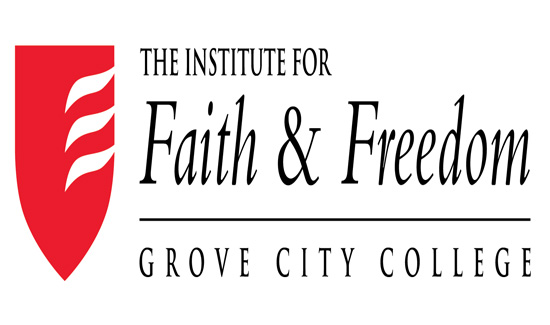Tax Appeals Result in Increase of Taxable Values
(March 1, 2017)–Summary: Allegheny County property owners and taxing bodies filed 7,143 assessment appeals in 2016. The net change in assessed values (pre-appeal to post-appeal) was $19.1 million upward. The County is now in the fifth year since the last reassessment. The ratio of assessed value to market value of sales dipped to 87 percent in 2016 (based on 2015 sales). That is the ratio that can be used for appeals following a judge’s ruling that the 85 percent cutoff level was no longer in effect. Real estate tracking firms put the 2016 increase in home prices at five to six percent pointing to a further decline in the assessed value to sales price ratio that will be released in July. Appeals and the assessment issue are about to become a major source of controversy once again.
____________________________________________________________________________
In 2016, there were 7,143 appeals of property values that are used to determine taxes in Allegheny County. Prior to the appeals, the combined assessed value of these properties was $2.787 billion and after appeals were processed the value rose a net $19 million to $2.806 billion.
Property owners filed 3,269 appeals that resulted in a net decrease of $224.8 million in assessed value. Meanwhile, 3,853 appeals were brought by taxing bodies, with school districts filing 3,795 appeals, municipalities filing 57, and a combination of taxing bodies filing one appeal. In total, taxing body appeals resulted in an increase of $243.1 million in value for the properties appealed. Finally, a combination of owner/taxing body appeals on 21 properties produced a net $659,700 increase.
As expected, there were far more appeals of residential property (6,318) than non-residential (825, with the majority of the latter being commercial, with some industrial, agricultural, and other classifications). Appeals of residential property values resulted in a net increase of $137.4 million pre- to post-appeal meaning taxing body appeals were more successful in total than owner appeals. Meanwhile, appeals on non-residential property resulted in a net decrease of $118.3 million in assessed value.
The following examples will illustrate the opposite ends of the appeal spectrum in 2016. First, an owner initiated appeal on a large commercial office tower in Downtown Pittsburgh resulted in a decrease of $75 million in assessed value (from $222 million to $147 million) and second, a school district appeal on an apartment complex on the North Side resulted in an $8 million increase. There were nineteen appeals resulting in increases in value of $1 million or more, with most of these appeals on commercial properties. Meanwhile, 24 appeals resulted in decreases of $1 million or more.
Note that the City of Pittsburgh withdrew 1,003 of previously filed appeals in April of 2016 (see Policy Brief Volume 16, Number 18) on properties they felt were under assessed. This certainly had an effect on the total number of appeals (without the action there would have been 8,146 appeals) and the total value involved in 2016 appeals. The City appealed (but later withdrew most) properties that fell within its appeal criteria. A newspaper article in 2016 stated that the City would appeal properties it felt were 50 percent or lower than the estimated market value. It is not knowable how successful those 1,003 appeals would have been nor how the net taxable value for the City, Pittsburgh Public Schools, and the County would have changed.
However, there were 26 appeals in 2016 filed by the City that were not withdrawn. According to the Finance director, these were for properties with values that the City felt were too high and wanted to have lowered (see Policy Brief Volume 16, Number 15). Ten of the appeals ultimately ended up with a lower value after the appeal. In aggregate, these 26 appeals saw a pre- to post-appeal value decrease of $268,000.
Results of 2016 Appeals (Change in Pre-Hearing to Post-Hearing Value, $000s)
Appeal Brought By … Residential Non-Residential Total
Owner -$38,142 -$186,662 -$224,804
Governing Body $174,895 $68,360 $243,255
Combination $659 $0 $659
Total $137,412 -$118,302 $19,110
And while in past years two municipalities (Pittsburgh and Mt. Lebanon) were the most active in municipal led appeals, in 2016 several other municipalities (including Dravosburg, East Pittsburgh, Pennsbury Village, and Scott) initiated appeals. All but six of the County’s 43 school districts (Clairton, Deer Lakes, Duquesne, Elizabeth Forward, McKeesport, and West Mifflin) filed appeals on property values.
So what does the coming year hold for appeals in Allegheny County? As we noted in a Policy Brief last year (see Volume 16, Number 37), the County’s Common Level Ratio (the average of the ratios of the assessed value to sales price for sales in the County during the previous twelve month period) stood at 87 percent (it was 100 percent in 2012 following the reassessment).
Traditionally, appeals based on the CLR were granted only if the ratio fell 15 percentage points from a county’s pre-determined ratio (the ratio a county establishes between taxable value and assessed value: 100 percent in Allegheny County). Thus, appeals in Allegheny County would be granted if the CLR was 85 percent or lower. However, the Judge who ordered the last reassessment ruled that the CLR could be used whatever its value for appeals. Thus, with a CLR of 87 percent a homeowner with an assessed value of $200,000 could appeal seeking a reduction of the assessment to $174,000.
With average home prices in Allegheny County up as much as 6.9 percent in 2016, according to Zillow, there is a strong possibility that the CLR will fall further when the new value is released in July, prompting a spate of appeals. In an August 18, 2016 newspaper report a former Appeals Board member was quoted, "As long as the county refuses to update values, this common level ratio will be a factor in appeals moving forward."
As the years go by and property values increase at very uneven rates in different areas of the County the problems created by inequitable assessments that led to court ordered reassessments in the past will inevitably arise again. Too bad the County Executive refuses to abandon the inaccurate claim that property owners will be saddled with much higher tax bills after a reassessment. Windfall limitations imposed by the state prevent that from happening. Only those properties with market values that have increased far faster than the average rate will get hit with substantially higher taxes. Some slow or no increase in value properties will see taxes fall following a reassessment.
In the long interval until the next court ordered reassessment in Allegheny County, the over assessed and correctly assessed will be paying more than their fair share of taxes while the under assessed will pay less than their fair share. The longer the time between reassessments the greater the inequities become and that leads to increasing numbers of appeals based on the CLR. Unfortunately, CLR based appeals cannot completely eliminate inequities since it is an average of the ratio of assessments to sale prices. Moreover, these appeals set up possible conflicts between property owner assessment appeals and taxing body appeals.
There is no substitute for keeping assessments up to date other than having combined school, municipal and county tax rates so low that inequities in assessments do not matter. That is not the case in Allegheny County (or Pennsylvania), nor is it likely to ever be the case. Then too, frequent reassessments prevent the gross inaccuracies in assessments that develop when reassessments are very far between and they reduce the angst associated with reassessment. Almost all states require regular reassessments and have far less controversy and upheaval about assessments than in Pennsylvania and Allegheny County in particular. It is not an attractive feature of governance (and is likely unconstitutional) for the Commonwealth not to require regular and routine updating of market values for the purpose of determining property taxes.
As we have seen in the state’s Supreme Court rulings on suits brought on the issue, the uniformity clause in Article VIII, Section 1, dictates that property owners be treated equitably, which means assessed values for tax purposes should accurately reflect as closely as feasible current market values.
Eric Montarti, Senior Policy Analyst
Jake Haulk, Ph.D., President
If you wish to support our efforts please consider becoming a donor to the Allegheny Institute.The Allegheny Institute is a 501(c)(3) non-profit organization and all contributions are tax deductible.Please mail your contribution to:
The Allegheny Institute
305 Mt. Lebanon Boulevard
Suite 208
Pittsburgh, PA15234
For more on this topic click here
Link to Allegheny Institute Website





